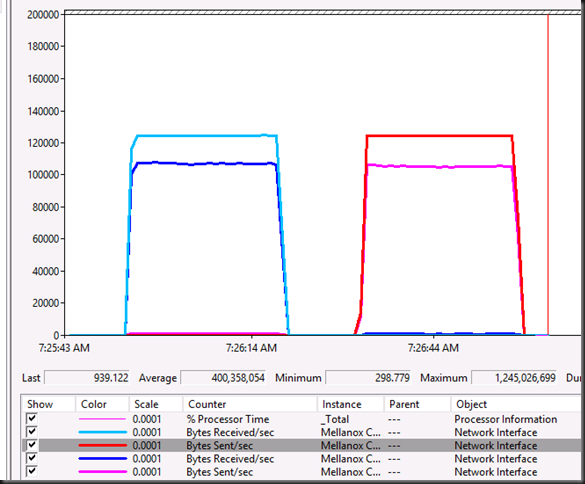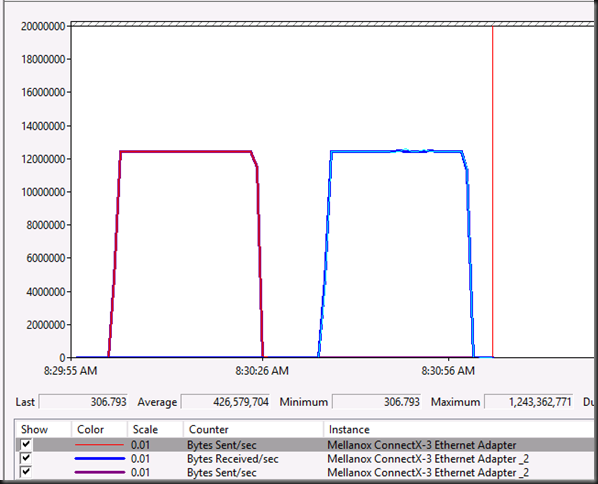Does live migration benefit from Jumbo frames? This question always comes back so I’d just blog it hear again even if I have mentioned it as part of other blog posts. Yes it does! How do I know. Because I’ve tested and used it with Windows Server 2008 R2, 2012 & 2012 R2. Why? because I have a couple of mantra’s:
- Assumption are the mother of all fuckups
- Assume makes an ASS out of U and ME
- Trust but verify
What can I say. I have been doing 10Gbps since for Live Migration with Hyper-V. And let me tell you my experiences with an otherwise completely optimized server (mainly BIOS performance settings): It will help you with up to 20% more bandwidth use.
And thanks to Windows Server 2012 R2 supporting SMB for live migration we can very nicely visualize this with 2*10Gbps NICS, not teamed, used by live migration leveraging SMB Multichannel. On one of the 10Gbps we enable Jumbo Frames on the other one we do not. We than live migrate a large memory VM back and forth. Now you tell me which one is which.

Now enable Jumbo frames on both 10Gbps NICs and again we live migrate the large memory VM back and forth. More bandwidth used, faster live migration.

I can’t make it any more clear. No jumbo frames will not kill your performance unless you have it messed up end to end. Don’t worry if you have a cheaper switch where you can only enable it switch wide instead op port per port. The switch is a pass through. So unless you set messed up sizes on sender/receiving host that the switch in between can’t handle, it will work even without jumbo frames and without heaven falling down on your head ![]() . Configure it correctly, test it, and you’ll see.
. Configure it correctly, test it, and you’ll see.

Pingback: Microsoft Most Valuable Professional (MVP) – Best Posts of the Week around Windows Server, Exchange, SystemCenter and more – #57 - Flo's Datacenter Report
Pingback: Microsoft Most Valuable Professional (MVP) – Best Posts of the Week around Windows Server, Exchange, SystemCenter and more – #57 - TechCenter - Blog - TechCenter - Dell Community
Pingback: Microsoft Most Valuable Professional (MVP) – Best Posts of the Week around Windows Server, Exchange, SystemCenter and more – #57 - Dell TechCenter - TechCenter - Dell Community
Pingback: Week of December 2: a little light reading, converting VMs, and VDI planning - Server and Cloud Partner and Customer Solutions Team Blog - Site Home - TechNet Blogs
Pingback: The Hyper-V Amigos Episode 3: Livemigration «